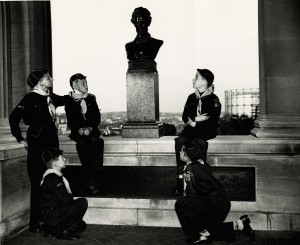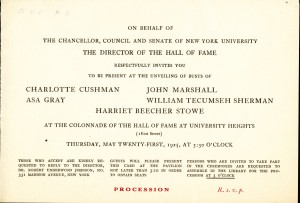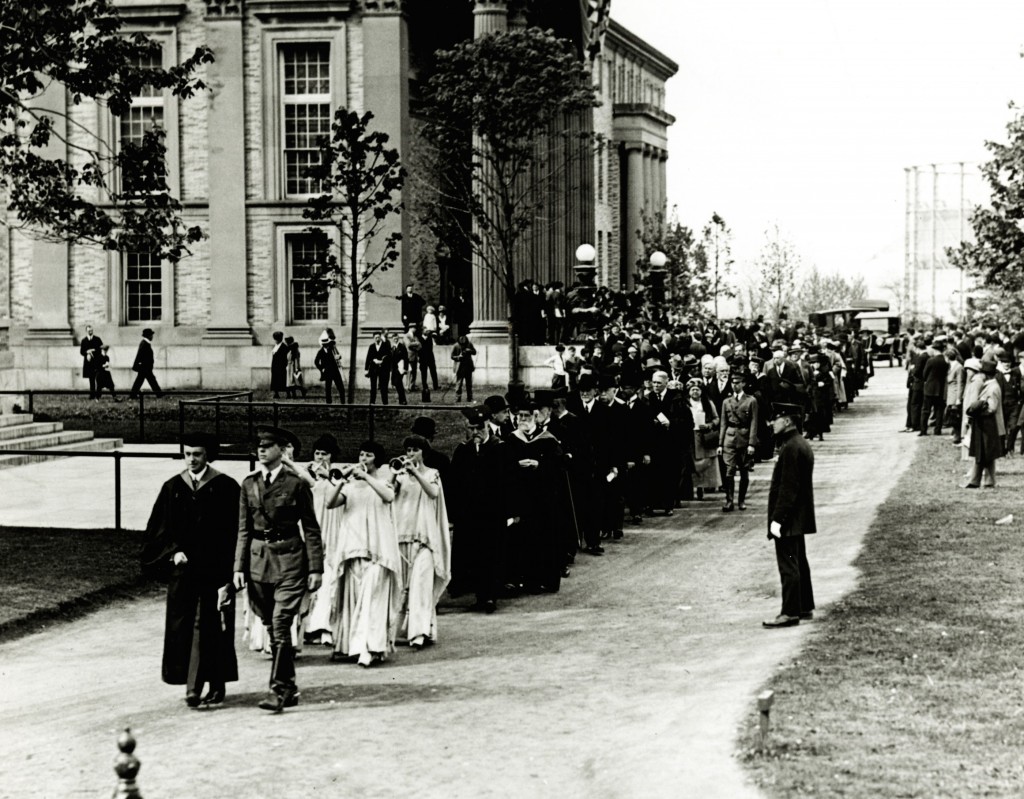
The Gloria trumpeters, dressed in white, would help lead the procession to the Hall of Fame for the installation ceremonies.
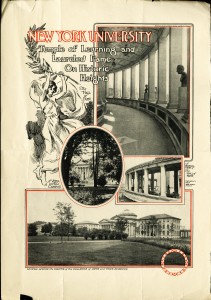
Oftentimes referred to as a temple, the Hall of Fame became synonymous with knowledge and glory. A place where people could reflect on the great figures in American history
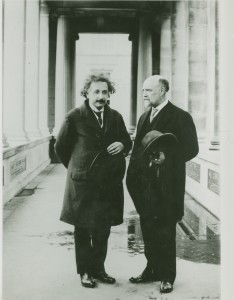
Albert Einstein visiting the Hall of Fame with Elmer Ellsworth Brown, NYU Chancellor from 1911-1933.
In 1900 the first election took place and the committee selected 29 inductees for the inaugural class. Members of the first group included obvious statesmen George Washington, Thomas Jefferson, Abraham Lincoln, along with writers like Nathaniel Hawthorne and Ralph Waldo Emerson and inventors such as Samuel F.B Morse and Eli Whitney. The Hall of Fame for Great Americans quickly became a renowned landmark visited and talked about throughout the country. Induction ceremonies and unveilings at the hall garnered attention from prestigious publications such as the New York Times and the Wall Street Journal. Well-known individuals like Albert Einstein, Mary Pickford, Herbert Hoover and General Pershing visited the site. Ceremonies became grand and stately affairs, attended by the academic and social elite.
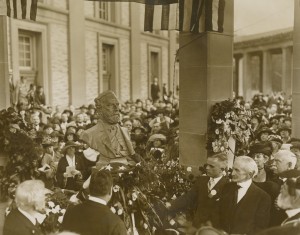
A number of commentators saw Lee’s entry into the Hall of Fame as a symbolic gesture towards unity between the North and South.
Organizations and individuals passionately supported their candidate through letters, booklets and pamphlets leading to politicized debates over inductees. Jefferson Davis, president of the Confederate states, was nominated on numerous occasions without success, while Confederate General Robert E. Lee, with the support of the Daughters of the Confederacy, was voted in by 1900, the Hall’s inaugural year.

